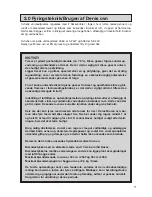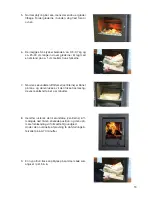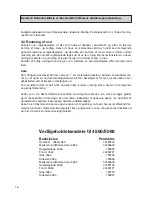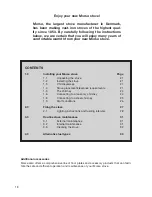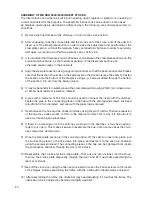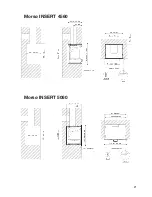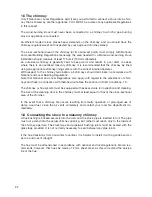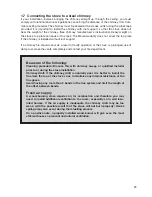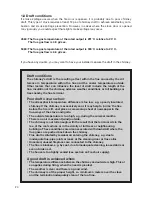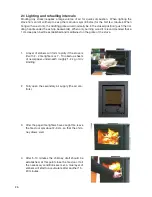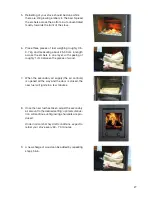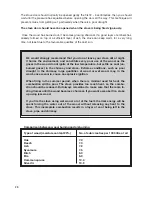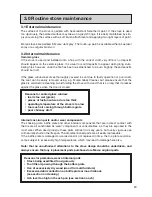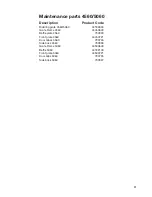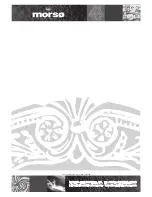
5
DK ENG
2.0 Firing the stove/Using your stove
The heat output of your stove is controlled by means of air inlets on the door where the
air is supplied around the firechamber and supplied as pre-heated secondary air to the fire
across the glass window. Both air controls must in principle be opened equally dependent on
draft conditions, wood, and heat requirement.
560’s rated heat output is , kW and 5060’s rated heat output is 5,8 kW. Your new Morsø
stove is EN-tested and recommended to be fired with wood.
n.B!
Wood is a material that contains a great deal of gas (approximately 75 %). the ga-
ses are released when the wood is lit and heated up. For this reason, it is important
that the gases are ignited quickly after stoking.
If the wood just lies smouldering, especially after re-stoking, a lot of smoke is
created, which, in the worst case, may cause an explosive ignition of the gasses,
resulting in damage to the stove.
In order to ignite the gases that are released from the wood, and to keep clear,
lasting flames during the combustion process, it is important to let in the required
quantity of oxygen (air supply) at all times.
the setting of the air supply, the method of ignition and the lighting intervals de-
pend on the draught in the chimney, the wind and weather, the amount of heat re-
quired, the fuel, etc. this means that it may take some time before you get to know
the correct functioning of the stove under any given circumstances.
Although you can fire your Morsø stove with almost all kinds of wood, you should
not fire with wet wood, or unseasoned wood. Wood ought to be stored under a roof
for at least 1 year, and preferably 2 years, with free access to wind. Wood should
be chopped as soon as possible after felling if it is to dry quickly. the wood can be
used once the moisture content is less than 20%. During the en test, all stoves are
tested with wood with a moisture content of (16 ± 4)%.
never use driftwood, as it usually has a high salt content, which damages both the
stove and the chimney. Impregnated and painted wood and chipboard emit poi-
sonous smoke and fumes, so they should not be used as fuel either.
Please note that liquid fuel may not be used in the stove.
Pieces of wood with a diameter greater than 10 cm should always be chopped.
the pieces of wood should be short enough to be able to lie flat over the layer of
embers, with air at both ends.
the maximum length of fuel in the stove is 30 cm. for 4560 and 35 cm for 5060.
the maximum quantity of fuel is 2.5 kg/hour (max. 3 pieces of wood each time you
re-stoke).
the first few times you light the stove, the fire should be moderate, so that the
heat-resistant paint can harden before firing more vigorously. During the hardening
phase, the paint may develop obnoxious smoke and smell the first time it is lit,
which is very normal. Make sure that the room is well ventilated during this period.

